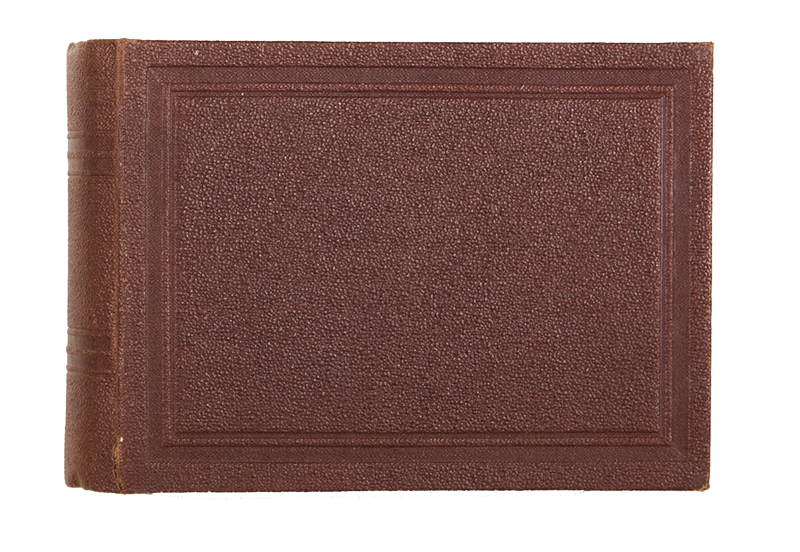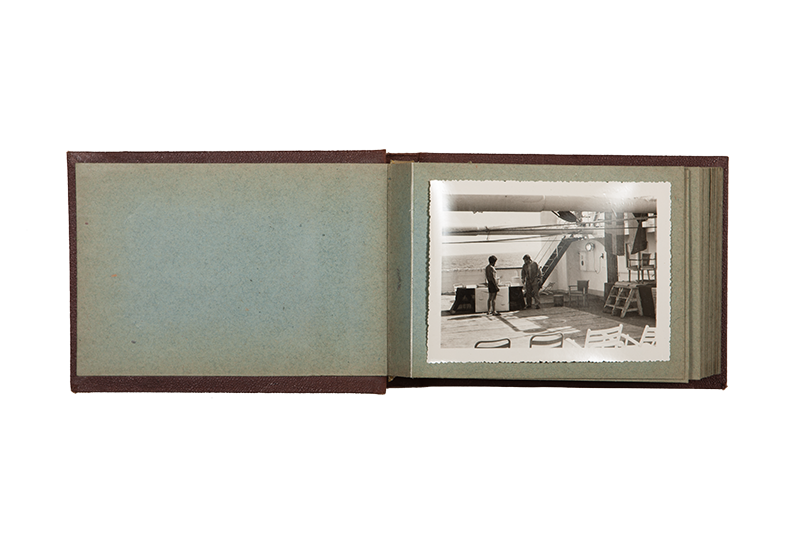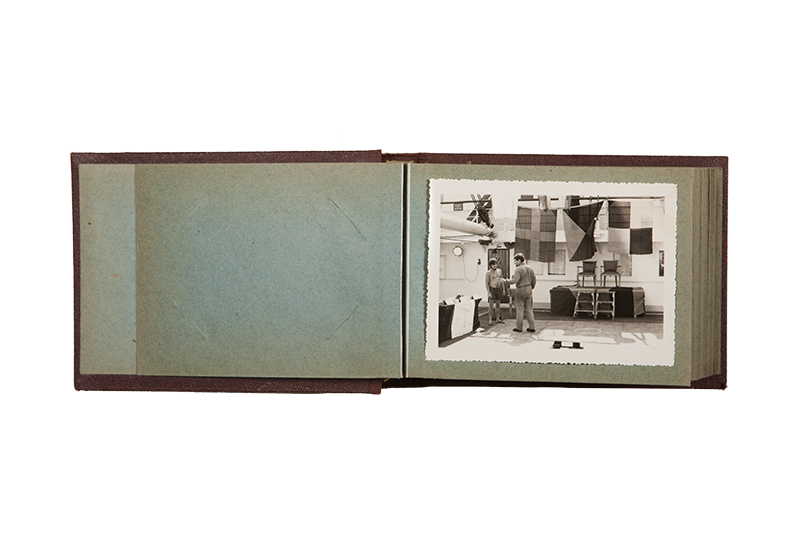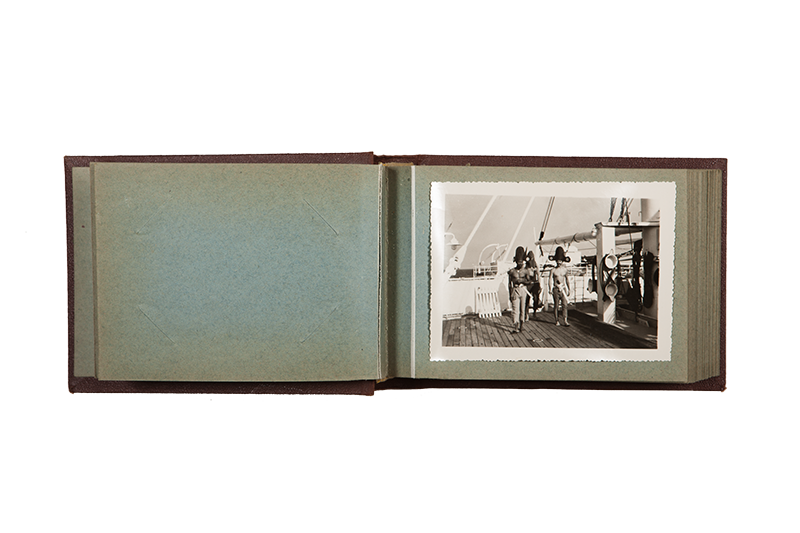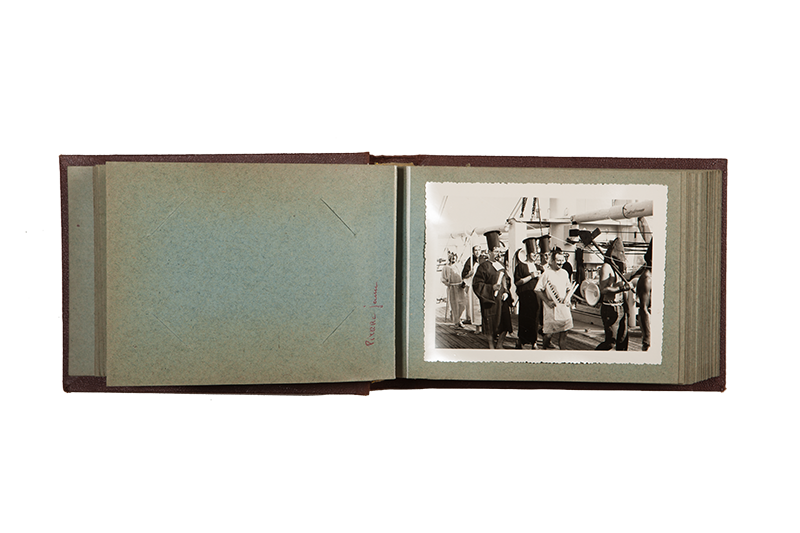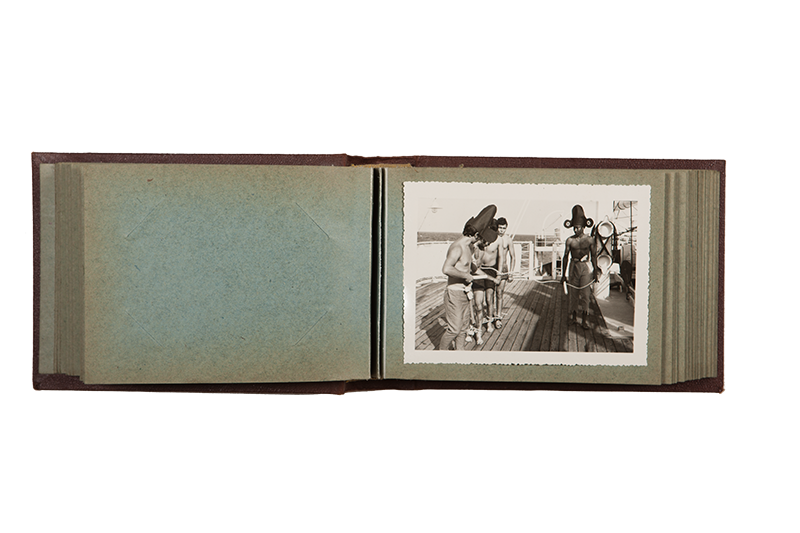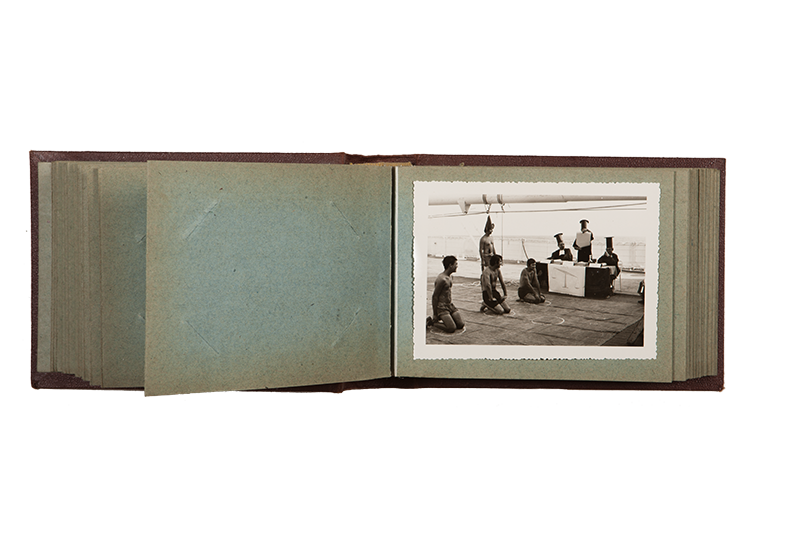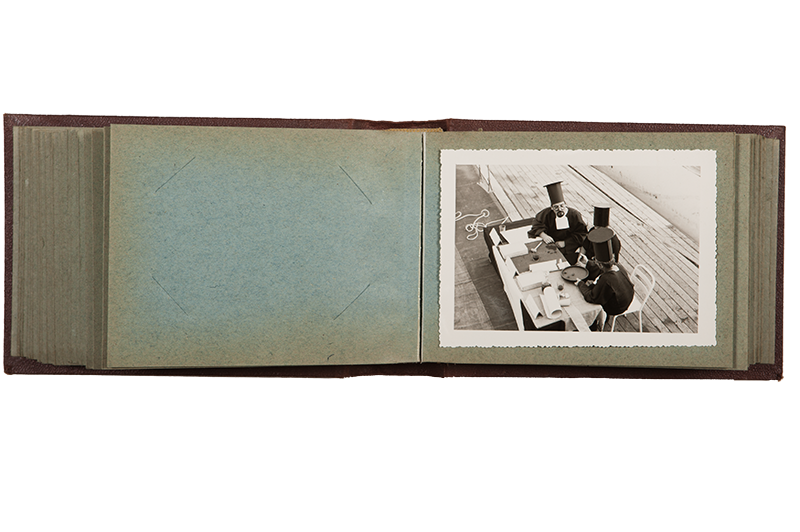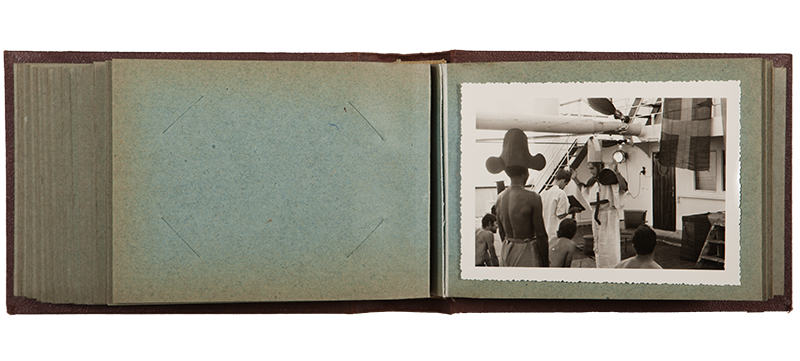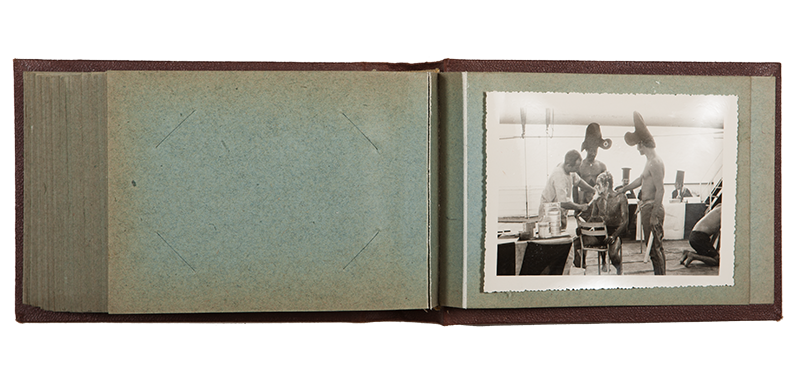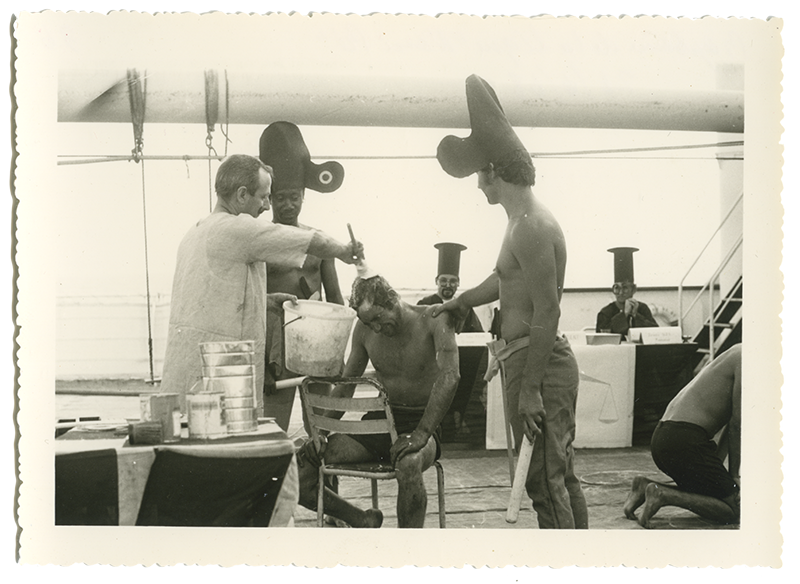line-crossing ceremony
30 gelatin silver prints 10 x 7 cm in a 32 pages 11,2 x 16 cm album.This album shows a ceremony that took place on a ship. Inscription on a back of a picture dates the pictures the 26th of june 1968. « ligne Nocibé » in Madagascar. Some of the young sailormen are made prisonner. Wrists and ankle tied with rope. Some older sailors plays the role of the advocate and judges. A trial seems to be organised and a verdict given. The line-crossing ceremony is an initiation rite in various navies that commemorates a sailor's first crossing of the Equator. The tradition may have originated with ceremonies when passing headlands, and become a "folly" sanctioned as a boost to morale, or have been created as a test for seasoned sailors to ensure their new shipmates were capable of handling long rough times at sea. Sailors who have already crossed the Equator are nicknamed Shellbacks, Trusty Shellbacks, Honorable Shellbacks, or Sons of Neptune. Those who have not crossed are nicknamed Pollywogs, or Slimy Pollywogs; in the Royal Canadian Navy they are nicknamed Tadpoles, or Dirty Tadpoles; an earlier nickname was griffins.Equator-crossing ceremonies, typically featuring King Neptune, are also sometimes carried out for passengers' entertainment on civilian ocean liners and cruise ships. They are also performed in the merchant navy and aboard sail training ships.

